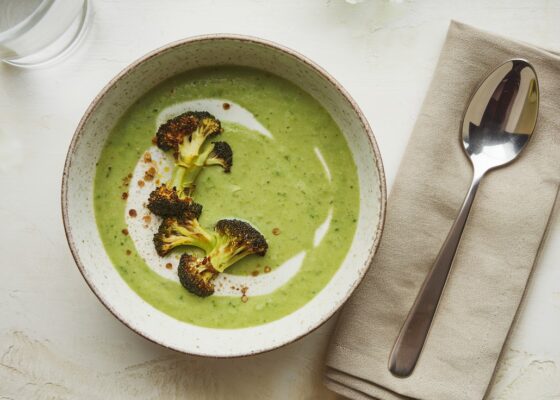
Gluten-free pizza crusts are not automatically low in carbohydrates, as many contain high-carb alternatives like rice flour, potato starch, or tapioca flour. Some gluten-free crusts actually exceed the carb content of traditional wheat-based pizzas due to added starches and fillers. However, specific low-carb options do exist, such as almond flour crusts with only 3 grams of net carbs per slice, or protein-based alternatives like chicken crusts. Understanding the nutritional composition of different flour alternatives reveals the most suitable choices for various dietary needs.
Key Takeaways
- Gluten-free pizza crusts are not automatically low-carb, as many contain rice flour and starches with higher carbohydrate content than wheat flour.
- Almond flour-based crusts offer the lowest carb option at 3 grams net carbs per slice, compared to 30+ grams in traditional crusts.
- Alternative crusts using cauliflower or chicken can significantly reduce carbs, though cauliflower versions may contain hidden starches and fillers.
- Reading ingredient labels is crucial, as gluten-free crusts often contain high-carb ingredients like tapioca starch and potato flour.
- For truly low-carb options, choose protein-based or nut flour crusts while avoiding rice flour and starch-based alternatives.
Understanding Gluten Free Pizza Fundamentals
While traditional pizza crusts rely heavily on wheat flour and gluten for their characteristic texture, gluten-free alternatives have revolutionized pizza-making for those with dietary restrictions or carb-conscious goals.
For individuals with celiac disease or those following low-carb pizza recipes, alternative flour options provide viable solutions without compromising taste.
The gluten-free pizza crust variety offers diverse options, with almond flour emerging as a particularly attractive choice for its low carbohydrate content of approximately 3 grams per slice.
However, not all gluten-free crusts automatically translate to lower carb counts, as some alternative flours can contain more carbohydrates than conventional wheat flour.
Gluten-free doesn't always mean fewer carbs – certain alternative flours pack more carbohydrates than traditional wheat-based options.
Understanding the nutritional composition of different flour alternatives helps consumers make informed choices based on their specific dietary needs and carbohydrate goals.
Stevia is a popular keto-friendly sweetener that can be used in gluten-free pizza recipes to reduce sugar content without affecting blood sugar levels.
Comparing Carb Content in Pizza Crusts
When examining carbohydrate content across different pizza crusts, traditional wheat-based options typically contain considerably more carbs than their gluten-free alternatives, with regular crusts averaging 30+ grams per slice compared to specialized low-carb options. Alternative flour choices, such as almond flour and cauliflower, offer substantial carb reductions, though consumers should note that not all gluten-free options automatically translate to lower carb counts. The presence of hidden sugars and starchy ingredients in some gluten-free crusts can actually result in carbohydrate levels matching or exceeding those of conventional pizza bases, making careful label reading essential for carb-conscious consumers. It's important to avoid refined carbohydrates as they convert swiftly to glucose, which can disrupt ketosis.
Gluten vs. Regular Carbs
Many consumers assume gluten-free pizza crusts are automatically lower in carbohydrates than traditional wheat-based alternatives, but the reality is more complex.
While some alternative flours, like almond flour, can create low carb options with just 3 grams of net carbs per slice, other gluten-free crusts may contain more carbohydrates than regular pizza due to added starches and fillers.
Key considerations when comparing gluten-free and regular carbs:
- Alternative flour choices greatly impact total carbohydrate content.
- Cauliflower-based crusts vary widely in carb content based on preparation methods.
- Added starches in gluten-free products can increase overall carbohydrate levels.
- Traditional wheat crusts typically contain around 30 grams of net carbs per slice.
Understanding these differences helps consumers make informed decisions about their dietary choices, regardless of gluten content.
Alternative Flour Carb Counts
A thorough analysis of alternative flour options reveals striking differences in carbohydrate content across various pizza crusts.
While gluten-free pizza crusts are often assumed to be low-carb, the carbohydrate content varies considerably based on the flour type used. Almond flour pizza crust emerges as a remarkable low-carb option, containing only 3 grams of net carbs per slice, making it suitable for those following a low-carb diet.
Traditional gluten-free flours like rice flour and tapioca starch can actually contribute higher carbohydrate counts than grain-free alternatives.
Even cauliflower crusts, despite their health-conscious reputation, may contain unexpected carbohydrate levels due to additional binding ingredients.
Modern innovations like chicken-based crusts demonstrate that alternative flour carb counts can approach zero, offering viable options for carb-conscious consumers.
Hidden Sugars in Crusts
Despite their health-conscious reputation, gluten-free pizza crusts often harbor considerable amounts of hidden sugars and carbohydrates that can surprise unsuspecting consumers. The carbohydrate content varies greatly based on the alternative flours used, with some gluten-free crusts containing even more carbs than traditional wheat-based options.
Key considerations when evaluating gluten-free crusts:
- Rice and tapioca flour-based crusts typically contain higher amounts of hidden sugars.
- Almond flour alternatives offer lower net carbs at approximately 3 grams per slice.
- Potato starch additives can greatly increase overall carbohydrate content.
- Vegetable-based options like cauliflower crust provide lower-carb alternatives, though texture differs.
Understanding these variations helps consumers make informed choices, particularly when selecting gluten-free crusts for health or dietary reasons.
Reading nutritional labels carefully remains essential for identifying hidden sugars and managing carbohydrate intake effectively.
Popular Gluten Free Flour Alternatives
Several popular flour alternatives have emerged to meet the growing demand for gluten-free, low-carb baking ingredients. Among these options, almond flour stands out as a versatile choice for pizza crusts, containing only 3 grams of net carbs per slice while providing healthy fats. Coconut flour offers another low-carbohydrate solution, though its highly absorbent nature requires additional moisture in recipes. While rice flour is commonly used in gluten-free baking, its higher carbohydrate content makes it less suitable for low-carb diets. Cauliflower has gained popularity as an innovative pizza crust base, offering a vegetable-rich alternative when combined with cheese and eggs. Chickpea flour, though protein-rich and gluten-free, contains higher carbohydrate levels, making it less ideal for those following strict low-carb dietary plans. A popular choice for keto-friendly foods, avocados provide healthy fats and are low in net carbs, enhancing the nutritional profile of alternative pizza crusts.
The Science Behind Gluten Free Dough
The science of gluten-free dough relies heavily on understanding how different flour types interact with binding agents to create structure and texture in the absence of traditional wheat proteins.
Alternative starches and proteins, such as xanthan gum and psyllium husk, work together to mimic the elasticity and binding properties typically provided by gluten in conventional dough.
The selection of specific flour combinations and binding agents directly impacts both the carbohydrate content and the final texture of the crust, with nut-based flours generally producing lower-carb results compared to grain-based alternatives.
Flour Types and Properties
Creating successful gluten-free pizza crusts requires understanding how alternative flours behave differently from traditional wheat flour, particularly in their interaction with moisture and binding agents.
When developing low-carb pizza recipes, the selection of flour greatly impacts both nutritional content and texture. Almond flour produces a crispy, nutty-flavored crust with approximately 3 grams of net carbs per slice, while coconut flour creates denser results due to its high moisture absorption.
- Almond flour provides the lowest net carb content and maintains structural integrity
- Coconut flour requires additional eggs or liquids to offset its absorption properties
- Rice flour yields a softer, more traditional pizza crust texture
- Tapioca and potato starches increase carbohydrate content but improve elasticity
These distinct properties influence how each flour type performs in gluten-free crusts, affecting both taste and texture.
Binding Without Gluten Proteins
Understanding how gluten-free dough achieves its structural integrity requires exploring the complex interplay of alternative binding agents that replace traditional gluten proteins. In low carb preparations, ingredients like almond flour combine with specialized binding agents such as psyllium husk and xanthan gum to create a workable dough structure. These elements collaborate to provide the elasticity and texture traditionally supplied by gluten.
| Binding Agent | Function | Texture Impact |
|---|---|---|
| Almond Flour | Base structure | Dense, nutty |
| Psyllium Husk | Elasticity | Chewy, flexible |
| Xanthan Gum | Cohesion | Smooth, stretchy |
| Ground Flaxseed | Moisture retention | Tender, moist |
| Coconut Flour | Absorption | Light, airy |
The careful balance of these binding agents helps create gluten-free dough that maintains structural integrity while delivering satisfying texture and mouthfeel.
Alternative Starches Impact Carbs
While conventional pizza dough relies heavily on wheat flour, gluten-free alternatives introduce a complex matrix of starches that notably impact carbohydrate profiles.
Alternative flours vary considerably in their carbohydrate content, with options like almond flour providing low-carb benefits, while others such as tapioca and potato starch can raise overall carb levels.
Key considerations when evaluating gluten-free pizza crusts:
- Net carbohydrate content varies dramatically between different alternative flours
- Some gluten-free options contain higher carbs than traditional wheat crusts
- Almond flour-based crusts typically offer the lowest carbohydrate content at 3g per slice
- Additional ingredients like toppings and sauces can considerably affect the final carb count
This variation in carbohydrate content makes it essential for consumers to carefully examine ingredients when selecting gluten-free crusts that align with low-carb dietary goals.
Health Benefits and Drawbacks
Many health-conscious individuals turn to gluten-free, low-carb pizza crusts as alternatives to traditional wheat-based options, though these choices come with distinct advantages and limitations. While alternative flours like almond and coconut offer lower carbohydrate content, some gluten-free products made with potato or tapioca starches can actually contain higher carb levels than conventional crusts. Protein-based options, such as chicken-based crusts, provide substantial nutritional benefits while maintaining low-carb dietary goals, though texture differences may require adjustment for some consumers. The key consideration lies in carefully reviewing nutritional information, as gluten-free labeling doesn't automatically indicate lower carbohydrates. Additionally, compensating for flavor differences with extra toppings can inadvertently increase the overall carbohydrate content, potentially undermining health objectives. Using keto-friendly options such as unsweetened almond milk on pizzas can help maintain low-carb intake while enhancing flavor.
Making Smart Pizza Choices for Weight Loss
Selecting a gluten-free pizza crust requires careful consideration when pursuing weight loss goals, as not all alternatives offer the same nutritional benefits. While certain gluten-free pizza crusts made from cauliflower or almond flour contain fewer carbs than traditional options, others may actually hinder weight loss efforts due to high starch content and glycemic impact. Choosing healthier toppings and practicing portion control remain essential strategies for success. For those on a keto diet, zucchini noodles or Shirataki noodles can be excellent low-carb pasta alternatives to consider when choosing pizza crusts.
- Compare nutritional labels between different gluten-free bases, focusing on carbohydrate content and serving sizes
- Select crusts made from vegetables or nuts rather than refined starches
- Load pizzas with nutrient-dense toppings like colorful vegetables and lean proteins
- Monitor portion sizes and integrate pizza meals into overall daily caloric goals
Best Low Carb Pizza Base Options
Understanding the terrain of low-carb pizza bases reveals several innovative alternatives that can support both gluten-free needs and carbohydrate restrictions. Almond flour-based pizza crusts stand out as a leading option, offering merely 3 grams of net carbs per slice.
Almond flour crusts revolutionize low-carb pizza options, delivering satisfying taste while maintaining minimal carbohydrates for health-conscious pizza lovers.
Meanwhile, the groundbreaking ZeroCarb LYFE crust, made primarily from chicken, delivers an exceptionally low-carb, protein-rich foundation.
While cauliflower pizza crust has gained popularity as a gluten-free option, consumers should carefully review ingredient lists, as some variations may contain unexpected carbohydrate levels.
Incorporating flour alternatives like almond flour or coconut flour into low-carb pizza bases enriches the nutritional profile by adding healthy fats and fiber.
When selecting any low-carb pizza crust alternative, attention must also be paid to toppings and sauces, which can greatly impact the overall carbohydrate content.
Thoughtful selection of both base and toppings guarantees a truly low-carb pizza experience.
Reading Pizza Nutrition Labels
Successfully maneuvering nutrition labels on gluten-free pizza crusts requires attention to several key components beyond the basic carbohydrate count.
When evaluating options for low-carb diets, consumers must carefully examine serving sizes, total carbohydrates, and fiber content to determine net carbs accurately.
While some gluten-free alternatives, particularly those made with almond flour, offer lower carb options, others may contain more carbohydrates than traditional wheat crusts.
- Compare total carbohydrates against dietary fiber to calculate net carbs
- Check serving sizes, as they often vary between brands
- Review ingredient lists for hidden carb sources, such as starches and fillers
- Look for whole food ingredients like cauliflower or nuts as primary components
It's important to eliminate bread, pasta, rice, and other high-carb items to maintain a low-carb intake effectively. Reading nutrition labels strategically helps identify truly low-carb options among the vast array of gluten-free alternatives.
Tips for Ordering Gluten Free Pizza
When ordering a gluten-free pizza with low-carb requirements, customers should inquire about the specific ingredients used in the crust and whether the kitchen maintains separate preparation areas to prevent cross-contamination.
Restaurant staff should be asked about cooking methods, including whether dedicated tools and surfaces are used exclusively for gluten-free pizzas.
Understanding the establishment's commitment to allergen protocols and ingredient sourcing helps guarantee both dietary compliance and food safety standards are met.
Questions Before Ordering
Ready to order a gluten-free pizza that aligns with low-carb goals? Before placing your order, it's essential to gather specific information about the pizza crust and its nutritional content.
Understanding these details helps make informed choices that support dietary needs while satisfying pizza cravings.
- What type of alternative flour is used in the gluten-free pizza crust (almond, cauliflower, or other options)?
- Can you provide the complete nutritional information, including carbohydrate content per serving?
- Are there specially formulated low-carb crust options available, such as chicken-based or keto-friendly alternatives?
- Which toppings and sauces are recommended for maintaining lower carbohydrate content while complementing the gluten-free crust?
These questions enable customers to evaluate options effectively and select a pizza that meets both gluten-free and low-carb requirements.
Preparation and Settings
Proper preparation and kitchen settings play an essential role in creating safe, delicious gluten-free pizzas that maintain lower carbohydrate content. The process requires careful attention to ingredients, especially when working with alternative flours like almond flour, which can greatly impact carb counts. Professional kitchens must maintain strict protocols to prevent cross-contamination while preparing these specialty crusts.
| Setting Factor | Impact on Pizza |
|---|---|
| Separate Prep Area | Prevents gluten exposure |
| Dedicated Tools | Guarantees safe handling |
| Temperature Control | Affects crust texture |
| Storage Methods | Maintains freshness |
| Pizza toppings Layout | Influences final carbs |
These preparation guidelines help guarantee that gluten-free pizzas meet both dietary restrictions and nutritional goals while maintaining food safety standards.
Alternative Pizza Crust Recipes
As health-conscious individuals seek alternatives to traditional wheat-based pizza crusts, a variety of innovative low-carb and gluten-free options have emerged in recent years.
Leading alternatives include almond flour crusts, containing merely 3 grams of net carbs per slice, and protein-rich chicken-based crusts that offer zero carbs while maintaining structural integrity.
These alternative pizza crust options often incorporate cream cheese and eggs, creating keto diet-friendly bases without sacrificing taste.
Maintaining electrolyte balance is crucial when incorporating these low-carb crusts into your diet, as reduced carbohydrate intake can lead to sodium and potassium loss.
Key considerations when selecting alternative crusts:
- Verify actual carb content, as some gluten-free options may contain higher carbs than traditional crusts.
- Consider ingredient quality and avoid unnecessary fillers or preservatives.
- Evaluate preparation methods that impact final nutritional content.
- Balance taste preferences with dietary requirements when choosing alternatives.
Expert Recommendations and Research
Scientific research and expert guidance have shaped the understanding of gluten-free and low-carb pizza crust alternatives. Studies reveal that while gluten-free crusts benefit those with celiac disease or gluten sensitivity, they don't automatically qualify as low-carb options.
Expert analysis shows that alternative flours, particularly almond flour, can provide considerably lower carbohydrate content, with some varieties containing just 3 grams of net carbs per slice.
Nutritional profiles vary considerably among gluten-free crusts, with experts emphasizing the importance of careful label examination. Research indicates that starches commonly used in these products can substantially increase carbohydrate levels, making them unsuitable for low-carb diets.
While cauliflower-based alternatives offer reduced carb content, studies suggest that taste satisfaction may be compromised compared to traditional wheat-based crusts.
Frequently Asked Questions
Is Gluten Free Pizza Dough Low-Carb?
Gluten alternatives in pizza dough don't automatically mean low carb content. While some options offer health benefits through reduced carbohydrates, many gluten-free crusts contain high-carb ingredients regardless of pizza toppings chosen.
How Many Carbs Are in a Gluten-Free Crust Pizza?
Gluten-free pizza crusts vary from 3 to 30+ grams of carbs per slice, depending on ingredients used. Carb alternatives like almond flour and cauliflower offer health benefits, while traditional gluten-free ingredients may contain higher carbohydrates.
Does Gluten Free Pizza Have More Carbs Than Regular Pizza?
Gluten free pizza can contain more carbs than regular pizza due to alternative ingredients like rice flour and starches. Carb comparisons vary by recipe, affecting pizza health and dietary choices.
Is Domino's Gluten-Free Crust Low-Carb?
Domino's gluten-free crust is not considered low-carb due to its rice flour ingredients and 24g carbohydrate content. Those seeking low carb alternatives should explore other nutritional options beyond Domino's gluten free offerings.
Conclusion
While gluten-free pizza crusts offer an important alternative for those with celiac disease or gluten sensitivity, they are not inherently low-carb. Most gluten-free flour blends contain high-carbohydrate ingredients like rice flour, potato starch, or tapioca flour. For those seeking both gluten-free and low-carb options, cauliflower, almond flour, or coconut flour-based crusts provide viable alternatives that maintain the pizza experience while reducing carbohydrate content.









No Comments